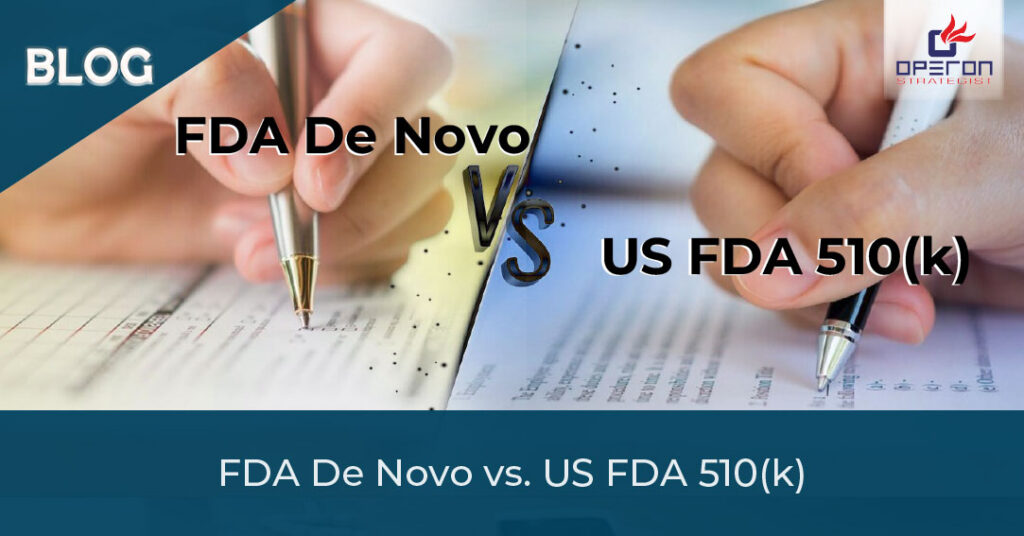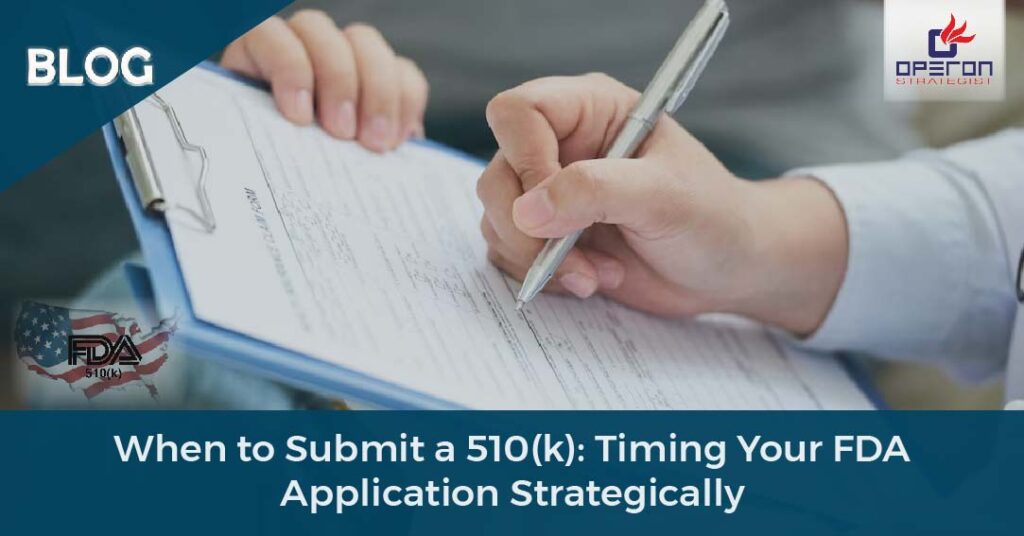
Medical device manufacturers seeking market entry into the United States must navigate the complex landscape of FDA regulatory pathways. Two common options for classifying and marketing medical devices are the US FDA 510(k) and the FDA De Novo pathway. Understanding the key differences between these regulatory routes is crucial to ensuring a smoother approval process, minimizing time to market, and maintaining compliance.
In this blog, we’ll explore the differences between the FDA De Novo and US FDA 510(k) pathways, their eligibility criteria, timelines, and when to consider hiring a medical device regulatory consulting firm to streamline your submission process.
Understanding the US FDA 510(k) Premarket Notification
The US FDA 510(k) process is the most widely used premarket submission route for Class II medical devices in the United States. It is applicable when your device is substantially equivalent to an already legally marketed device, known as a predicate device.
Key Features of the US FDA 510(k) Pathway:
- Eligibility: Devices that are similar in intended use and technological characteristics to existing FDA-cleared devices.
- Regulatory Classification: Primarily for Class II devices, some Class I devices.
- Timeline: FDA typically reviews 510(k) submissions within 90 calendar days.
- Data Requirements: May include bench testing, biocompatibility, performance testing, and labeling information.
- Outcome: If cleared, the device is authorized for commercial distribution in the US market.
When to Choose the 510(k) Route:
- You’ve identified a predicate device already cleared by the FDA.
- Your device is not significantly different in terms of safety and effectiveness.
- You want a faster, less expensive pathway to market.
What is the FDA De Novo Pathway?
The FDA De Novo classification process is designed for novel medical devices that do not have a legally marketed predicate but are low to moderate risk. This pathway allows manufacturers to establish a new classification for their device and set the groundwork for future 510(k) submissions for similar products.
Key Features of the FDA De Novo Pathway:
- Eligibility: Devices that are first of their kind and have no suitable predicate.
- Regulatory Classification: Used to reclassify a device from Class III to Class I or II.
- Timeline: Typically takes between 150 to 180 days, depending on complexity.
- Data Requirements: Includes non-clinical and sometimes clinical data to support safety and effectiveness.
- Outcome: Establishes a new product classification that future devices can reference via the 510(k) route.
When to Choose the De Novo Route:
- Your device is innovative and has no predicate device.
- The device poses low to moderate risk to patients.
- You want to be the first entrant in a new product category and shape the regulatory standards.
Comparing FDA De Novo vs. US FDA 510(k)
| Criteria | US FDA 510(k) | FDA De Novo |
|---|---|---|
| Predicate Device | Required | Not required |
| Device Type | Not novel | Novel |
| Risk Classification | Class I or II | Typically Class I or II |
| Review Timeline | ~90 days | 150–180 days |
| Cost | Lower | Higher |
| Data Requirement | Moderate | High (often includes clinical data) |
| Outcome | Market clearance | New classification + market clearance |
Why the Right Pathway Matters
Choosing between FDA De Novo and US FDA 510(k) can significantly impact your product development strategy, budget, and launch timeline. A wrong decision can result in delays, rejections, or reclassification, adding substantial costs and regulatory burden.
That’s where Medical Device Regulatory Consulting becomes invaluable. An experienced regulatory consultant can:
- Assess your product’s eligibility for 510(k) or De Novo
- Perform predicate device searches
- Prepare and compile submission documents
- Communicate with the FDA during the review process
- Ensure ongoing compliance with post-market requirements
Real-World Impact: Market Advantage
Companies that successfully clear their products through the FDA De Novo process often gain a first-mover advantage. They set the performance standards for future similar devices, often becoming the predicate for competitors’ 510(k) submissions.
On the other hand, the 510(k) route allows manufacturers to bring products to market faster and at a lower cost—ideal for companies entering a competitive category.
Request FDA 510(k) or De Novo Guidance
Need Help Navigating FDA De Novo or US FDA 510(k)?
Whether you’re launching a novel diagnostic device or a next-gen wearable, the FDA regulatory process is not something to navigate alone. Our Medical Device Regulatory Consulting team has helped numerous manufacturers in the USA get their products to market efficiently and compliantly.
At Operon Strategist, we:
- Provide regulatory strategy guidance
- Perform comprehensive risk and predicate analysis
- Develop submission dossiers
- Offer end-to-end support from concept to clearance
Contact us today to schedule a free consultation and find the right path—FDA De Novo or US FDA 510(k)—for your device.


